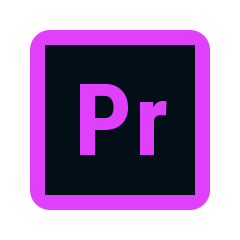Introduction:
As a member of Generation Z, whose lives are deeply intertwined with the digital world, I see myself as a forerunner in this era, thanks to my software intelligence. My keen interest in learning and working with the latest software, and my ability to use them efficiently and professionally, is an undeniable part of my life. My high understanding of software user interfaces and algorithms, along with my personal studies in programming and keeping up with technology news—which I consider one of my hobbies—has enabled me to excel in the software field. I have learned and practically applied numerous software in my academic and professional life.


Microsoft Office:
Excel, Project, PowerPoint, Visio, Word, +VBA
Office software marked my entry into the world of software, fulfilling many of my everyday and practical computer usage needs. Initially, I learned Word, Excel, and PowerPoint in in-person classes. Throughout my university years, I became proficient in Word for report writing. Subsequently, to automate work processes at Abgiran Company, I began to learn Excel professionally and also mastered VBA to create efficient management tables in Excel. For class presentations during my master’s
studies, recognizing their importance, I started learning PowerPoint through online courses and YouTube, resulting in notably effective presentations. I also learned Visio for drawing flowcharts and certain class reports and research projects, enhancing my ability to illustrate flowcharts clearly and simply. Moreover, I acquired skills in Microsoft Project, a specialized software for construction management, through university classes and have extensively used it in my work history

Autodesk
Revit, AutoCAD, Civil3D, Navisworks, +Enscape
Throughout my academic and professional journey, Autodesk software has been one of my essential tools.
- Initially, I learned AutoCAD at the “Sahel Pak” institute, which greatly aided me in drafting and reading plans. It also served as a source of income, allowing me to undertake university projects and draft plans in AutoCAD.
- Subsequently, I was introduced to Revit and the BIM domain, which set the direction for my future. I completed my Revit and Enscape training at Tehran University under the supervision of Engineer Hatef Ahmadi Zad. Following that, I transitioned primarily to using Revit for all my drawings. After extensive use of Revit, I took a Revit Structure course at BIMcity, led by Engineer Elias Bestagani, resulting in BIM-related work experience listed on my resume. I am still learning this exceptional software, exploring various aspects such as Dynamo, electrical and mechanical systems, energy, parametric modeling, and more, which are part of this software’s extensive capabilities.
- For my highway engineering course and a university research project during my bachelor’s degree, I also learned Civil3D through online courses, becoming familiar with the regulations, standards, and both manual and software-based drafting techniques. Ultimately, I delivered my university project in both software and manual versions, featuring a several-kilometer mountain road complete with curves and standards. Additionally, I am acquainted with Navisworks for project control.
Programming and Working with Artificial Intelligence
In recent years, we have witnessed the dawn of artificial intelligence (AI) in our lives, marking the beginning of a new era in technology. Working with AI might seem straightforward at first glance, and it initially appears that it could lead to widespread unemployment. However, a closer, more engineering-focused examination reveals that, much like computers, AI will not only prevent job loss but also create new opportunities for entrepreneurship, especially for those skilled in working with AI technologies. One of the most crucial prerequisites for working effectively with AI is familiarity with prompt writing, enabling optimal use of AI to achieve desired outcomes. Another prerequisite is understanding AI systems and their functionalities. Despite all challenges, such as internet censorship in Iran and sanctions, my passion for staying updated with technology has driven me to keep pace with the latest developments. As a result, I have become proficient in using AI to meet my daily needs in personal, work, and academic aspects.

Other Software Skills
Below is a list of other software tools with which I have worked and am familiar. A brief description of each software’s application is provided below it.

Python
I learned this software through online courses led by Engineer Jadi, focusing on university and research projects.

Etabs & Safe
Through online courses from the University of Tehran, I learned these software programs for the analysis and design of concrete and steel structures in university projects.

Photoshop
As a freelance photographer, I have gained proficiency in this software for editing photos and creating posters.

Adobe Premiere Pro
As a teaching assistant at the university during the COVID-19 pandemic, I learned this software for editing recorded laboratory videos.

Latex
During my master’s program, I learned this software online to prepare scientific articles and university reports.

Lingo
During my master’s studies, I learned the Lingo programming language for optimization projects in university research.

Lightroom
With a keen interest in photography, I studied this software to improve the lighting in my photos.

MATLAB
I learned this programming language at the university to complete a project for the Analysis and Design of Systems course, which involved the practical implementation of algorithms such as neural networks.
Learning Continues
These are just a practical subset of the software tools I have mastered. There are many other applications we use regularly, perhaps without fully realizing their significance. However, leveraging software in ways that are truly functional can bring about significant transformations in our work, and this is the essence of software intelligence. Furthermore, due to my interest in technology and software, I am constantly enhancing my skills in the mentioned software and learning new practical applications.
